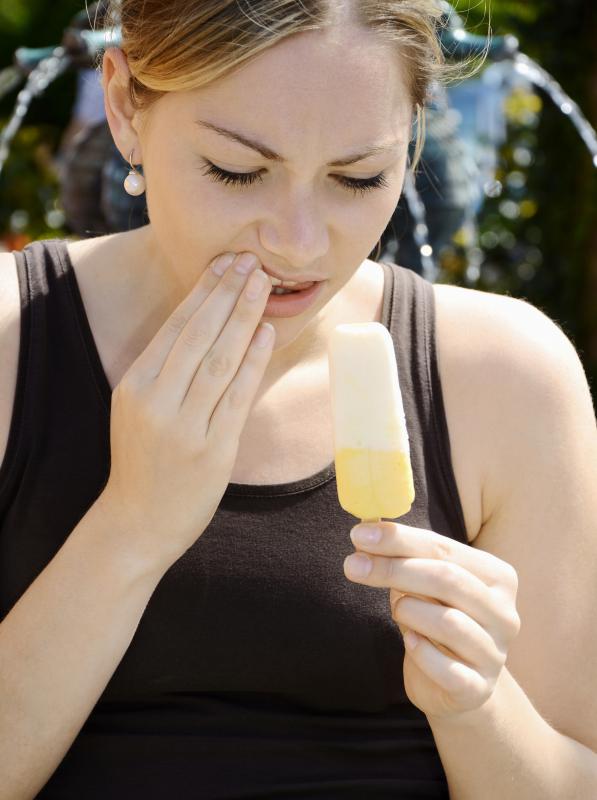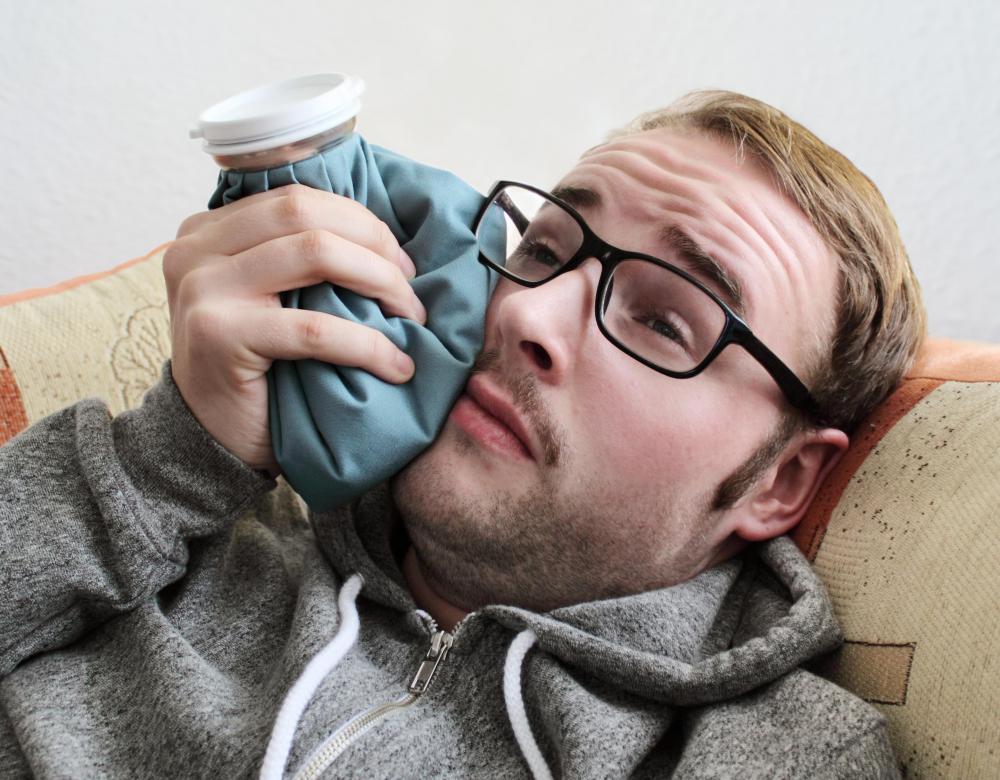At TheHealthBoard, we're committed to delivering accurate, trustworthy information. Our expert-authored content is rigorously fact-checked and sourced from credible authorities. Discover how we uphold the highest standards in providing you with reliable knowledge.
What Are the Best Tips for Healing Dry Socket?
After a tooth is pulled, a blood clot forms to protect the open hole in the bone. A dry socket forms when the blood clot gets dislodged. Dry socket leaves the tissues and nerves exposed, leading to severe pain and increasing the risk of infection. Patients who experience a sudden increase in pain after having a tooth pulled should see their dentists as soon as possible for evaluation and treatment. Healing dry socket requires careful and diligent at-home care while minimizing or eliminating activities that could make the problem worse, such as smoking, drinking with straws, and eating irritating foods.
Dentists flush out a dry socket with irrigation tools or syringes filled with sterile water to remove food particles and other debris that have accumulated in the exposed hole. Medicated gauze packed into the hole helps protect a healing dry socket from foreign objects, reduces the risk of infection, and speeds the healing process. Changing the gauze at least once a day until the dry socket begins to heal normally is important. Some dentists prefer to have their patients come into the office to have the gauze changed.

A healing dry socket can be extremely painful. Over-the-counter pain killers, such as acetaminophen or ibuprofen, can help reduce pain, but many patients require a prescription-strength narcotic pain killer for a short period of time. Oral antibiotics may be given if the dry socket becomes infected or if the dentist thinks the risk of infection is high.

Keeping the area clean is one of the best ways to help a healing dry socket. Rinsing the mouth with warm salt water or a mouthwash provided by the dentist helps keep the area free of bacteria and also minimizes pain and swelling. Many dentists give dry socket patients a small syringe with a thin, curved tip to flush the area several times a day, which prevents food particles from getting lodged in the hole with the gauze.

Ice packs can be applied to the outside of the jaw to help reduce pain and swelling during the healing process. The packs should be covered in thin fabric and applied for no more than 20 minutes at a time. Sipping liquids slowly and chewing food carefully on the opposite side of the mouth from the dry socket helps prevent irritation. Spicy foods and meals that are particularly hot or cold may also irritate the dry socket and should be avoided until the healing process is complete.
AS FEATURED ON:
AS FEATURED ON:



















Discussion Comments
I am in a similar situation as yourself. I went back to my dentist after a tooth extraction, he confirmed dry socket and used a small swab infused with clove oil, this helped instantly.
I might pop into my local pharmacy and ask if I can do a similar thing myself with clove oil.
I’ve been fighting with dry socket pain but I really don't want to have to take OTC or prescription painkillers. Are there any vitamins or natural “medications” for relieving this miserable pain? Has anyone found a more homeopathic way that has helped? I’ve heard clove oil is good. Has anyone tried it?
Post your comments